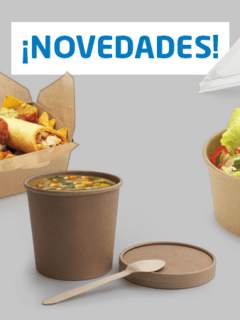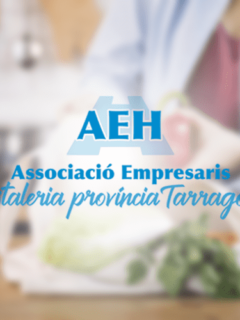At RAJA® we are firmly committed to green kilometres and sustainable transport. And with this objective in mind, Antonio Reyes, Head of Logistics at RAJA®, and Juan Carlos Exposito from Tranportes Calsina Carré, Integral Logistics Operator, recently attended an Intermodal Transport Day to visit the Novatrans facilities in Perpignan.
Our delegation visited the Saint Charles terminal in Perpignan, and took part in the loading and unloading of our goods by train, in what represents the beginning of a firm commitment to continue adding more green kilometres to our supply chain.

During the visit, we took the opportunity to interview Juan Carlos Expósito, Commercial Transport Manager at Calsina Carré for our account, so that he could explain all the details about combined transport with rail and its benefits.
What are the general advantages of intermodal rail freight transport?
It offers a reliable and punctual transport solution to improve the productivity of the entire supply chain, it is the capacity of transport in a single means of management.
Environmentally friendly: on routes where volumes can be grouped and where the distance is adequate, combined transport provides substantial energy savings and reduces CO2 emissions. 1 km by road is equivalent to 1000 kg Co2 compared to rail with the full load, 82% less for each tonne transported.
Respectful of society: reduces accidents, traffic jams and dependence on fossil fuels.
It makes better use of the existing capacity of the rail and inland waterway networks.
Combines the flexibility of road with the savings of rail on long journeys for large volumes.
It is safe and secure: reduces the risk of theft or damage to goods during transport, without delays and inclement weather.
Higher constant average speed.
You have argued us many advantages and now tell us what are the disadvantages?
Well, the profitability of the operation begins to be effective from 600 km, because there are additional costs necessary for rail transport, towing and coupling, parking near the terminals, etc. that have to be taken into account in the whole operation.
Rail transport is always an intermodal transport since it requires road transport to transport the goods to their final destination, as we have already pointed out.
Therefore, because of the radial distribution from the centre is not efficient and the extremes still do not have rail connectivity, intermodal transport does not make sense.
There are no lines in the corridors with the greatest flow in Spain, which is why we only make 5% of total shipments, whereas in Europe it is over 20%.
The width of the tracks can be different from one country to another, so we can have difficulties when it comes to transferring goods, as well as involving a significant cost in terms of money and time.
Need for infrastructure. It is a means of transport that requires tracks to function, i.e. it is conditioned by the existence of infrastructures that do not exist in some European countries. In addition, this means that, unlike other means of transport, there are very few occasions on which it can reach the warehouse or final destination installation of the goods.
What requirements must be met in order to be able to do this, and what is the timing and transit time at the exit points?
A reservation must be made with the contracted service to guarantee entry onto the train, and the type of goods to be transported, as well as the registration numbers of the tractors and semi-trailers that will pull the goods to delivery and destination must be provided in advance.
The transit time is 16 hours from Paris to Perpignan, with a departure time of 18:00 from Paris and a maximum embarkation time of 14:00.
What is the loading and unloading management time on a maximum capacity train and what staff is necessary to carry it out?
The maximum capacity per regularity is 50 wagons, with the maximum cadence of mobile and guided cranes, it takes 3 hours to unload and load, plus verification of documentation, and they are connected to the control tower via radio.
The team is made up of about 13 people to manage 3 shuttles a day.
How many corridors are there at present?
Novatrans transports more than 3 million tonnes of goods per year on 6 terminals for a large number of sectors of activity, ranging from natural resources to manufactured goods and consumer goods, on a European rail network of approximately 40,000 km between Northern and Southern Europe.
They serve daily the main European cities and countries such as Paris, Lyon, Marseille, Rotterdam, Benelux, Scandinavia, United Kingdom, Northern Italy, Germany and the ports of Dunkirk, Marseille/Fos, Le Havre, Gennevilliers, Rouen, Lyon, Antwerp, Zeebrugge, Rotterdam, Hamburg with connections to all parts of Europe via partners.
To conclude this very interesting interview, why do you think intermodal transport is the way forward for transport in the medium term?
Firstly, to continue caring for the planet, we must all do our utmost to try to reduce CO2 emissions, it is not a bet for a company only valuing it in the economic aspect, but they must value the service and the meaning of the green kilometre, it is not always cheaper, because of the additional costs that we have mentioned before.
Family reconciliation and the working conditions of the drivers and the availability of professional staff are becoming increasingly important.
Freight rail travel therefore makes it much easier to maintain good professionals who can provide a service in line with market requirements.
RAJA® would like to thank Transportes Calsina Carré, and especially Juan Carlos Exposito, for organising the intermodal transport conference we attended in Perpignan. We are very happy to start this journey together and to do it reducing emissions.















